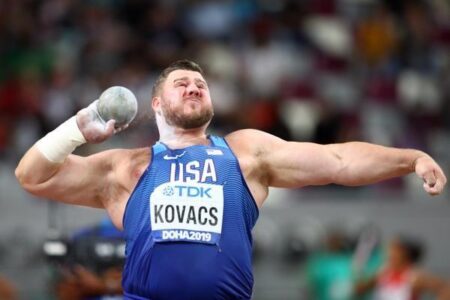In the high-stakes world of elite sprinting, where milliseconds separate champions from contenders, the risk of injury is a constant shadow over athletes’ careers. A recent study titled “Epidemiology of Injury Complaints in Elite Sprinting Athletes in Athletics (Track and Field)” sheds new light on the prevalence, types, and causes of injuries that afflict some of the fastest athletes on the planet. Published on ResearchGate, this comprehensive research offers valuable insights into how injury patterns impact performance and training, providing coaches, medical professionals, and athletes with critical data to enhance prevention and recovery strategies in the fiercely competitive arena of track and field sprinting.
Injury Patterns and Risk Factors Among Elite Sprinting Athletes
Elite sprinters are consistently subjected to high-intensity training and explosive movements that predispose them to a distinct spectrum of injuries. Predominantly, hamstring strains remain the most frequent complaint, accounting for nearly 40% of reported cases. These injuries often stem from muscular imbalances, fatigue, and inadequate warm-up protocols. Additionally, the intricate biomechanics of sprinting place excessive stress on the lower extremities, particularly the knees and ankles, increasing the incidence of tendonitis and ligament sprains during peak performance phases.
Key risk factors identified in these athletes include:
- Previous injury history, which significantly raises susceptibility to recurrence
- Intense competition schedules allowing insufficient recovery time
- Improper training techniques, particularly during acceleration and deceleration
- Inadequate flexibility and core stability
| Injury Type | Prevalence (%) | Main Contributing Factor |
|---|---|---|
| Hamstring Strains | 40 | Muscle fatigue & imbalance |
| Achilles Tendonitis | 20 | Overuse & poor biomechanics |
| Knee Ligament Sprains | 15 | Sudden directional changes |
| Groin Injuries | 10 | Insufficient warm-up |
| Shin Splints | 8 | Repetitive impact loading |
Analyzing the Impact of Training Loads on Sprinting Injuries
Investigating the correlation between training loads and injury incidence in elite sprinters reveals a nuanced relationship where both undertraining and overtraining can contribute to heightened vulnerability. Research indicates that spikes in training intensity-especially abrupt increases in sprint volume and resistance drills-are linked with soft tissue strains and muscle tears. These injuries predominantly affect the hamstrings, quadriceps, and calf muscles, which endure considerable stress during high-velocity efforts. Coaches are urged to implement periodized programs that carefully modulate volume and intensity, ensuring athletes avoid sudden load escalations that disrupt tissue adaptation and recovery processes.
Key risk factors associated with improper load management include:
- Rapid workload fluctuations: sudden surges exceeding 10-15% weekly load increase.
- Inadequate rest intervals: insufficient recovery between intense training sessions.
- Poor monitoring of fatigue markers: ignoring physiological signs leading to overuse.
Implementing advanced load-tracking methodologies-such as GPS monitoring and session rating of perceived exertion (sRPE)-enables practical adjustments tailored to individual responses. The table below summarizes typical injury rates across training load brackets observed in elite-level sprinters:
| Weekly Training Load | Injury Incidence (%) | ||||||||||||||||||||
|---|---|---|---|---|---|---|---|---|---|---|---|---|---|---|---|---|---|---|---|---|---|
| Low (30-50 units) | 12% | ||||||||||||||||||||
| Moderate (51-80 units) | 8% | ||||||||||||||||||||
|
Investigating the correlation between training loads and injury incidence in elite sprinters reveals a nuanced relationship where both undertraining and overtraining can contribute to heightened vulnerability. Research indicates that spikes in training intensity-especially abrupt increases in sprint volume and resistance drills-are linked with soft tissue strains and muscle tears. These injuries predominantly affect the hamstrings, quadriceps, and calf muscles, which endure considerable stress during high-velocity efforts. Coaches are urged to implement periodized programs that carefully modulate volume and intensity, ensuring athletes avoid sudden load escalations that disrupt tissue adaptation and recovery processes. Key risk factors associated with improper load management include:
Implementing advanced load-tracking methodologies-such as GPS monitoring and session rating of perceived exertion (sRPE)-enables practical adjustments tailored to individual responses. The table below summarizes typical injury rates across training load brackets observed in elite-level sprinters:
|





